Highly Significant Insights for MitMs
This page presents two modules of system engineering that were selected by MitMs in the FLLP who found them particularly profound and useful. The two modules were connected together in various ways to form a connected system to see what develops at the combination level. In this way, insights can become modules of field-tested concepts that are examined together with other modules for deriving higher-level insights, and so on. Not all new modules find partners, but when they do, like the examples herein, it can be exciting. System thinking is fractal. It has no logical end state.
A warmup insight sample:
To size up the social situation easily and quickly, determine if there are losers in the ongoing transactions. If there are losers, its corrupt. If there are no losers, it’s likely to be obvious.
We do not expect you to do more than you can to understand and apply these premium insights. Only you know your capacities and limits. You have no obligation to us to do what you can’t. On this matter, our expectations are neutral. Delighted if you can learn. Understanding if you can’t.
Transparency of primary causation
Our half-century of knowledge building about the dynamics of hierarchical human society produced many insights that, at the time they were hatched, we thought were original. As our library of sociology and the internet grew, we found precedents for the great majority of our creative inspirations, but not all. Looking for precedents by others is always on our to-do list. It’s how we find mentors. It’s also how we know when we’re working above the mentor line.
Experience taught us that no formulated concept we hatch is so obvious, so rational as to already be part of society. Some of the most valuable insights, we learned, were deliberately declared off limits by the ruling class and enforced. One example is the persistence of management in using motivational strategies known to fail. We are appalled also at the persistence of academia in using methods proven to be ineffective by their own science and experience. When we adopted the lessons learned from scientific research about adult learning, as an example, we added data points that validated the research. Now we’re aghast at the the failure of academia to use its own research findings on children learning as well. For a calamity this big, it is safe to assume that the failure of academia to educate its students is an outcome deliberately engineered by the ruling class. POSIWID. Victimhood is the latest baitball strategy. Reparations, not opportunity.
At this juncture, our first profoundly-valuable insight, a top takeaway (T 2), one which can be found nowhere else, required the development and implementation of Plan B in order to perceive it. This maxim is beneficial to own for any member of our species. It greatly reduces the angst and insecurity delivered by the Plan A menace – for life. Its benefit kicks in, full-strength, immediately after you ingest and test this innate characteristic of invariant human nature for yourself.
One kernel of T2 is plain common sense and POSIWID, based on a large number of field experiments that had no contrary results. What the ruling class establishment does springs from its rigid groupthink value system that does not include respect for the social contract or inalienable human rights. In the first decade of Plan B life, the process of elimination (POE) narrowed possibilities down, eliminating the failed standards like financial incentives and greed. In the norms of society, the operational reality has no standing. When contrary evidence is ignored, a head-on collision with reality is inevitable.
While the monster calamity produced by Plan A is too complex to locate primary causation, the POE eliminated any positive values to the workforce and stakeholders and the collective itself. Plan A is lose lose all the way, and it’s what the Establishment wants! POSIWID
While Plan A is the ideological choice throughout global society, we work with the empirical evidence of what doesn’t register for authoritarian action and what the Establishment aggressively repels. It is not necessary to prove causation to profit from the insight. You can run this POE test for yourself. You are substituting truth for a socially-conditioned delusion. Silence breaking.
The value system of the upper class of society does not include perpetuation of society itself. It’s clear that elites need Plan A ideology to satisfy their value system. Accordingly, any ideological scheme that benefits the workers/stakeholders class will be aggressively suppressed by the authorities. To have Plan B benefit the whole organization is seen as a big threat to what the ruling class holds most dear, whatever that is. In this ungodly mess, we are only a scribe of experienced events.
If we could eliminate all wastes due to evil, all men would be good. If we could eliminate all wastes due to ignorance, all men would have supreme wisdom. If we could eliminate all wastes due to laziness and misdirected efforts, all men would be reasonably and healthfully industrious. It is possible we could crowd off the sphere the inefficient and develop the efficient, thus producing a nation of men good, wise and industrious, thus giving to Caesar what is his and to the individual what is his. Harrington Emerson (1898)
Validation
It’s easy to test this insight. Using your knowledge of Plan B, when you are with a honcho and the right setting opens up, you mention that a tailor-made fix for the important issue being discussed exists. Then mention that anyone can see the implementation of this capability for himself. Offer this website as an introduction. These days, with every audience equipped with smart phones, they can visit this website on the spot.
Notice the immediate reaction of the audience to your claim. No honcho will say anything or reach for his electronic marvel. Nobody else will speak or risk getting caught visiting the website on their phone in public.
The reason for the “catatonia on cue” reaction originates from the well-measured speed of the subconscious mind. It runs its many recognition programs in less than a centisecond, ending every processing cycle by making up a plausible excuse for the failure of its imperatives, should they prove wrong in practice. Politicians have turned this instant defense reflex into an art form.
In the situation here with “Show Time” alive on the table, the subconscious mind hits an impasse. It knows that rejecting the ideology out of hand, without investigation, will not be plausible. They use the “show me” classic reason for rejecting follow up of an opportunity and when “show me” is offered and they still refuse, their game is exposed. The Plan A disaster is too significant to society to be tossed aside by an uninformed, reality-denying potentate. Instead of evaluating Plan B as a complex problem solver of enormous benefit, which it is, the subconscious mindset suspects this unfamiliar ideology as a threat to the status quo of the head shed omnipotence, which it is. Catatonia on cue.

Seeing the subconscious mind stall, tells you the individual is habituated to acting automatically upon reading his subconscious mind’s teleprompter -> ready, fire, aim. He doesn’t triage the output of his subconscious mind so he can veto the big and suspect issues for conscious-mind validation before he acts. Man can make no bigger mistake than trusting his subconscious mind, his intuition, and acting directly from his teleprompter imperatives display. Sooner or later, blindly following your intuition will put you in dire straits.
We have learned from Plan B implementations that, over time and above the mentor line, the subconscious mind will adjust to having its handiwork selectively vetoed. In fact, imperative vetoes can set the subconscious mind to work on structuring the problem complexity while you sleep. You reflect on its offering when your subconscious mind wakes you up to a pleasant surprise. You know the goodie didn’t come from your conscious mind because you were sound asleep!
This insight safeguards you from making big mistakes yourself and enables you to observe big mistakes being made by others. You can watch any exchange and when one confronts the other with a misdeed, he instantly recites his prepared excuse stored in his subconscious’ memory bank. That’s a sure giveaway of a person habituated to intuition before reality. Our big lessons are learned when we fail to attain a goal, stopping everything to reflect on the sequence of events – no time limit.
Marginalia Note:
These insight events raise a novel, never-asked question. Can I honestly claim authorship of an invention produced by my subconscious mind? When I tell the patent lawyer the truth, can he assign authorship to my subconscious, the rightful inventor? This a high-class problem. We hold over a hundred issued patents that were conscious-mind products from start to finish. It’s the invention that matters. The question haunts, still.
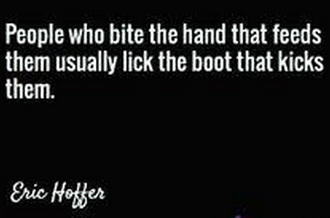
Top hyperlearning module
Fearmongering tit for tat
As you know from experience, the ruling class rules by infusing fear into their subjects. Forming a bait ball by fearmongering is standard practice for eliminating the variety in the collective, which is necessary to enable population control. The covid pandemic fiasco provided an example in the large. However, science has also measured that three quarters of the individuals in the upper class are plagued with the imposter syndrome. Also called perceived fraudulence, the imposter syndrome involves feelings of self-doubt and personal incompetence that persist despite education, experience, and accomplishments. To tell an executive that Plan B exists, triggers this syndrome, delivering its payload of anxiety. How can this fear be injected to omnipotent, infallible leaders? Initiating or threatening force or deception against a person or his rights is always morally illicit.
For several reasons, it doesn’t take a novice authoritarian long to discover he only has the power to punish his subjects and stakeholders with impunity and with certain success. However, every time he tries to manage prosperity, something positive, what worked for baitballs makes matters worse. He finds his authority status does not convert to positive social power status. That social power belongs to the MitMs and no one else, by virtue of the laws of nature. While management obtains blind obedience by coercion and deception. Improving productivity is a creative endeavor that is stopped in its tracks by hostile actions.
The elite class lives in constant fear that their incompetence to bring prosperity into the organization by their executive orders will be found out. They get to exercise their social power to punish their people and stakeholders, but not to benefit them or cultivate their self-worth. Their claim to total responsibility for the perpetuation of the collective is not justified by the consequences of their actions. They have no idea what’s going on in the workplace and what they do know is horribly obsolete.
Those who do have the social power to bring prosperity into the organization, the keystones, are abused by the ruling class as long-established standard practice. The threat of Plan B it senses is to reveal the fact that the emperors have no clothes, by exposing them as naked of power. The head shed will spare no expense to prevent this revelation, shooting a hole in their own boat in the process. It’s value system in use does not include a flourishing collective. Sabotaging Plan B is proof positive. POSIWID
In practice, every MitM that joins the FLLP enters as psychologically-damaged goods. Having been incessantly abused by management, they came to believe their low social status is justified. Keystones, at best, are necessary evils. In truth, MitMs are instrumental to make the place work at all.
In the course of running the Front Line Leader Programs (FLLP) a particular teaching tool for boosting the foremen/keystones proved to be very popular, Ho Lee Schmidt grade. The silence breaker was labelled the “Three Triangles.” Part of episode three, season one, it turned out to be a top-shelf module for hyperlearning. Before starting, the interventionist calls for a keystone to barricade the door to the room in case a manager shows up and sees the whiteboard. This rivets attention to the interventionist like no other.
Only after putting the three triangles teaching aid in service did we find that the ecosystem scientists had used a similar approach for ranking the species by importance in an ecosystem. This technique makes finding the keystone species level easy. Academics would never apply a tool like that to evaluate the hierarchical human ecosystem. They’d lose their jobs.
This is one of those cases in which the imagination is baffled by the facts. Adam Smith
The Three Triangles
In terms of organizational performance for productivity, despite management protests otherwise, the Front Line Leaders (FLLs) represent the only positive power position of the organization. They are uniquely placed, these MitMs, and they have several inherent positional advantages which empower them to serve as the organizational keystones with authentic responsibility for bottom-line results attended by the autonomy and the workforce to deliver.
Recognition of this social power is aided by understanding the Three Triangles of hierarchy reality. The purpose of these sketches is to lay out the argument for how things are distributed across an organization (graphically depicted by each triangle) and the implications generated by its message. It has been proven dozens of times that this derivation leads to immediate and full understanding about how closely tethered to nature’s law-driven reality the workings of hierarchical organizations at the keystone level really are.
The first two figures lay out the manpower distribution organizational chart of a standard hierarchy. Figure One lays out the number of tiers in a typical 1000-man hierarchical organization and its manpower distribution by organizational chart.
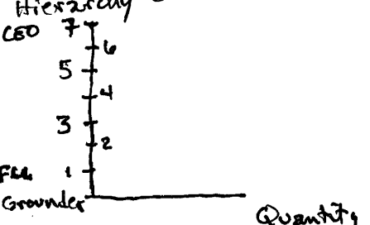
Figure 1: structure of the plot: membership quantity by hierarchical level, from grounders to CEO.
Figure Two graphically shows the population distribution of employees who work at each tier in that hierarchy. There are role-defined tiers within an organization, spanning the distance from the lowest tier worker (grounder) up to the individual voted as the CEO (president, potentate). Each square represents ten individuals of a thousand-person hierarchy. As Fig. 2 shows, there are fewer people that occupy each level as one moves up the hierarchy. There are 800 times more grounders than CEOs (1).

This distribution starts with the “Grounders,” (since they have their boots on the ground), the workers, while the FLL/keystones/foremen are positioned at the level of the hierarchy immediately above the grounders. This arrangement also finds the FLLs at the bottom of the management chain of command. The keystones are, by role, men in the middle. The great preponderance of employees, about 88% of the organizational roster, including the FLLs, function at the bottom two tiers of the organization. It features the classic and highly successful master/apprentice relationship coded into our Stone Age genome. This is why the Front Line Leader Program (FLLP) focuses upon those who occupy the positive-power master position intrinsic with the foreman level of the hierarchy. FLLs represent the direct connection between management edicts and actual work performed by the revenue crew. The Franceschi Fitting tracks the connection from abstract to physical functions.
The 80% of the population of the organization at the bottom – grounders – are those who do the actual productive work activities which generate the revenue (either through service or production) which sustains the organization. Grounders operate at the direction of and under the close-proximity supervision of FLLs, about 8% of the roster, the source of their positive power, who design and assign the task actions of the revenue crew. Design refers to the FLL responsibility for laying out the specific work activities, in sequence, to be performed over the course of the work shift. Assign means to designate the particular individuals who will be performing those tasks.
Figure 3 shows the distribution of organizational authority among the various levels of the hierarchy. It is zero sum. As you expect, it shows the largest amount of authority residing at the very top of the hierarchy. As one descends the levels of the hierarchy, the delegated authority (meaning the ability to compel discretionary action) progressively diminishes. This ends at the FLL level, the men in the middle, the keystones. Some have postulated that this triangle should extend down to employees (grounders). Since every organization claims that their employees always have the authority to stop work in the event of a safety concern. Even in those organizations which state this in writing know, in reality, any employees who might attempt to exercise that right would quickly find themselves in trouble with their supervisor (FFL).
Recognize the ubiquitous conflation of power with authority. Making no distinction between the two terms, they are used interchangeably. This conflation leads to great errors in the use of the words: duty and responsibility. For understanding of how the concepts of Plan B work, understand the critical distinction between social power (two kinds, + and -, and authority (one kind). It is a distinction which makes a dramatic difference.
Authority is awarded to someone, typically by vote or a potentate source which has the legitimacy (authority) to delegate authority. Within an organization this may be to commit to contracts, expend funds or direct individual members. Authority generally means the ability or right to direct, command, exact obedience, determine conduct or judge, and inflict punishment for nonconformance as proof of their social power.
Authority manifests in an attempt to dominate and control those beneath them in the hierarchy. All authority has to work with in its toolbox, however, is the use of force and coercion. Drive management includes threats of the loss of pay, hours, or even one’s job. Authorities can only inflict abuse or invoke punishment, neither of which produces any positive gains for an organization, but always delivers a drop in productivity.
Positive social power exhibits as the ability to produce effectively and efficiently. This power is earned, not granted. The FLLs have positive social power because they are placed within an organization where they have access to local, particular, and timely process information and have the revenue crew as reports.
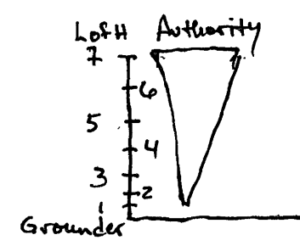
The greatest amount of authority (complete) exhibits at the apex of the hierarchy, diminishing as one descends the hierarchy until reaching the FLL level. This indicates that the FLLS have, in the minds of all management personnel above them, very little authority to act as they know best without obtaining permission from a higher-level authority. Again, since no authority reaches the grounders, the workers are left out of the official decision process. This represents an indignity that has consequences.
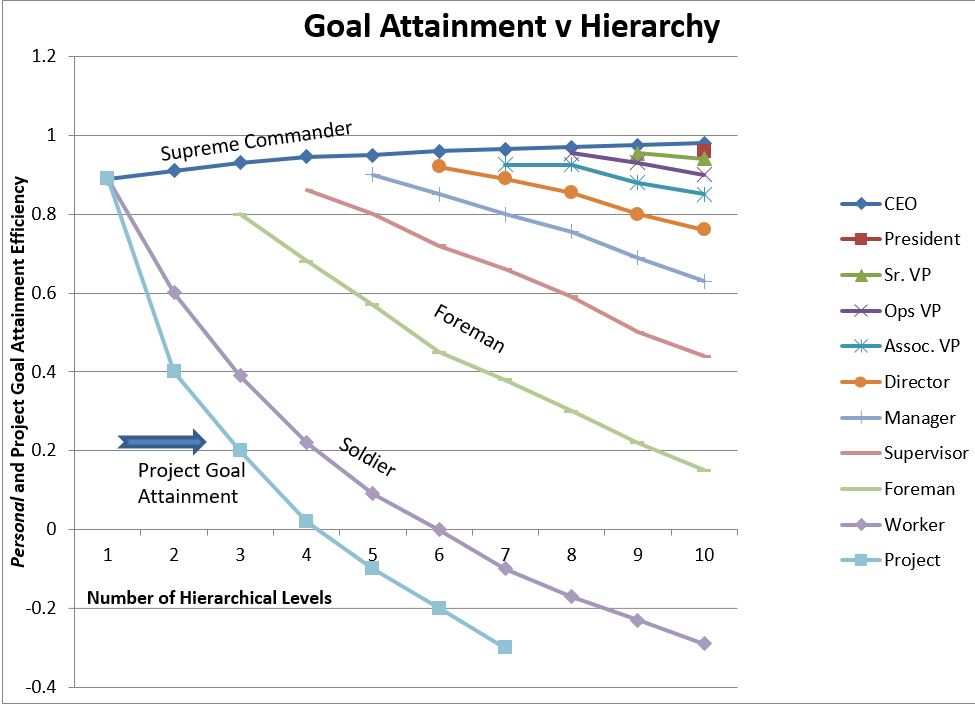
The second isosceles triangle in Figure 4 below is identical to the first. It depicts the flow of information coming into a various levels of the hierarchy from any source. The top tier, obtains information filtered, distorted, modified or, in a variety of ways, polluted by the sources at each interface handoff. Management receives input from internal sources (via briefings memos and reports), as well as external sources such as advisors, consultants, vendors, competitors, peer groups, customers, regulators, the local community, and more. The issue for an information receiver is determining the quality/utility of this input, in order to decide what can be safely used in decision making. This determination is made primarily by opinion of source reliability. With all the incoming information directed towards the ruling class, people holding the upper level management positions often refer to themselves as attempting to take a drink from a firehose. The AA section line through the fig 4 is the draftsman’s match line.
The highest input information flow and authority is found above the match line. This region defines the upper echelons of middle management and senior leaders. It is the realm of GIGO and it creates great psychological issues for those who function there. Their ability to conduct organizational performance in an effective, efficient manner is rendered impossible since garbage in can only produce garbage out, regardless of the decision making process employed. This graphic also highlights the existence of “white space” – the gap between the two inverted isosceles triangles.
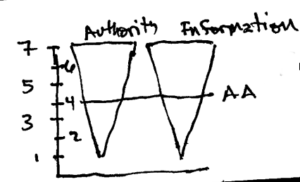
Figure five below enlarges the portion below the AA match line. It also shows the third triangle inverted in orientation of the first two, fits the “white space” between the first two triangles. As it shows in fig 5, it is shorter in height and labelled as Actionable Quality Information (AQI). The base is the FLL (level 1 of the hierarchy) and its trustworthiness diminishes as it rises up the levels of the hierarchy. However, as shown on the diagram, this triangle only extends upward by 2½ levels showing where the 2½ rule takes charge over the proceedings.
The 2½ rule evolved from the work of Rudy Starkermann in his dynamic simulation of social systems. As information flows upward and across the various levels and interfaces in a hierarchy, the quality and fidelity of that information degrades. Claude Shannon called the degradation an entropy increase. This is a consequence of control theory, entirely independent of personality and character of the participants, status, and authority differentials which exist between individuals residing at different levels of the hierarchy.
This differential across layers is labelled by sociologists as the power differential. Conflating power with authority (as discussed above) is a grievous error. As information crosses from one hierarchical level to the next, it is subjected to multiple distortions at each and every interface. These include omissions, compressions, exaggerations, and other forms of error, as well as misplaced emphasis and deliberate lies.

AQI confers the power (the ability to do useful work) specifically to the FLLs. AQI describes a specific category of information which is: timely, local, particular, reliable, verifiable, and actionable. Anything less can be used as input for decision making or direction, of course, but GIGO precludes task action effectiveness.
These triangles help explain why organizations flounder. It isn’t just sociologists who conflate power and authority. People in the upper echelons of the hierarchy, as a result of their status as infallible authoritarians (and often through a demonstration of that authority meant to reinforce their authority) routinely direct actions which turn out to be counterproductive and received by the grounders as punishment. Senior level managers are compelled to exercise their authority. They have it awarded to them by opinion, not performance, and, like an inalienable right, they feel they must act upon it to retain it. Few executive moves cause more damage to the organization than the use of punishment to defend their authority in zero-sum competitions.
Potentates also believe that, as a consequence of the wide scope of information flowing to them, they know best of what is in the interests of the organization. They believe that only they have “The Big Picture” view of the challenges facing the organization. As the figures show, while they have more variety of the information flowing into their level, it is more untrustworthy the further up the hierarchy one moves. Because they have no access to ground truth, AQI, they can’t even trust themselves to direct operations. Of the three triangles, only the middle one – the AQI triangle – confers power for supporting productivity and competitive advantage.
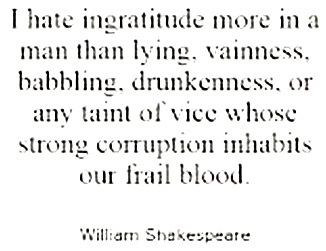
Let others lead small lives, but not you. Let others argue over small things, but not you. Let others cry over small hurts, but not you. Let others leave their future in someone else’s hands, but not you. Jim Rohn
Building higher-level insights
Combining module 1:
- The value system in use by the ruling class, by choice, does not include organizational prosperity and workforce well-being through increased productivity and competitive advantage. POSIWID In effect, the revenue crew is their sworn enemy.
With module 2:
- The ruling class is precluded by natural law, no choice, from making a direct contribution to organizational prosperity. It can spend the treasury but it can’t increase the treasury.
Produces the more abstract, higher level insights:
- To address real and significant disturbances, the ruling class is incompetent by position and role.
- The incompetence is caused by invariant human nature in conflict with natural law.
- Validation of Warfield’s Dictum: “Don’t ask them to do what they can’t.”
- The ubiquity of the imposter syndrome, as measured by science, validated
- The tie between Plan A and 3D corruption, as measured by the operational reality, is direct. Corruption is to be expected, not vilified as a moral lapse.
- The instinct of workmanship is devalued and suppressed, causing psychological harm and resentment.
- It explains the dismal record of academically-trained management.
It is impossible for the ruling class to “lead” its subjects to prosperity and happiness. The world would be in a much better condition if it could.
Exercising authority (opinion) is not leadership. The workforce does not appreciate punishment for doing good work. You don’t either.
The higher insight is that all tall hierarchies operating under the Plan A ideology, instinctive, are 3-D corrupt. Top to bottom, side to side, and corrupt in the eyes of their stakeholders, suppliers and customers. Unless Plan A ideology is transposed to Plan B ideology, it will successfully repel all efforts at reform. That means the keystone MitM is the only access for ideological change. It has the authority of natural law, the ultimate source, and immediate social power over the revenue crew where prosperity is either won or lost.
Note: Invariant human nature was formed during the Stone Age, a broad prehistoric period during which stone was widely used to make tools with an edge, a point, or a percussion surface. The period lasted for roughly 3.4 million years and ended between 4,000 BCE and 2,000 BCE, with the advent of metalworking.
Visits: 46


